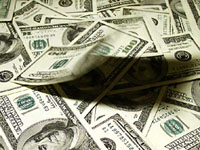In 2006, a record 11.4 billion dollars imported into Russia
In the second quarter of 2006, the Russian economy has shocked specialists with its huge net inflow of currency.

The results turned out to be so unexpected that Central Bank analysts have delayed the quarterly report in order to check their calculations. According to the Bank of Russia’s estimates, from the 1st April to the 1st July 2006, Russian companies and citizens imported 16.1 billion dollars more currency into the country than they exported. Altogether, during the first half of the year, import of capital exceeded export by 11.4 million dollars. This is 13 times more than in the whole of 2005. Specialists explain these records with the confidence of Russian companies in the strengthening of the rouble. Despite the fact that credit rates in the West are rising, borrowing money in a currency that is falling in value will be profitable. Central Bank is not happy with the record inflow of capital as they consider it yet another source of inflation.
From the beginning of the 1990s up until 2004, the private sector only exported capital from Russia. In 2000, there was a net outflow of 24.8 billion dollars. From then on, the volume of exported currency began to diminish. The IMF predicted that outflow would give way to inflow in 2004, but Yukos business ruined these statistics – exported currency reached 8 billion dollars. First, in 2005, the private sector drew in more capital than it exported. Then business and the population imported 0.9 billion dollars more than they exported.
Analysts have created estimates for the greatest loans made by national companies in April, May and the beginning of June: MTS – 1.58 billion dollars, Gazprom – 1.53 billion dollars, Vneshtorbank – 960 million dollars, Sberbank and Gazprombank – 500 million dollars each, Alpha-bank – 438 million dollars, Moscow Bank- 400 million dollars and Uralsib – 212 million dollars.
Such a huge inflow of capital also proved unexpected for economists. Despite the fact that money for debtors stopped reducing in value at the end of 2005, the increase in foreign loans continues. This is due, to a great extent, to the strengthening of the rouble in relation to the dollar in the second quarter and the mass confidence that the rouble will further increase in value.
Cheapness of the Western currency aside, experts explain the enthusiasm for external loans with the fact that in Russia it is more complicated than abroad to borrow large sums, which are essential for the development of Russian companies.
Currently, world credit rates are continuing to rise and some specialists believe that the second quarter has provided one of the last opportunities to borrow cheaply. For this reason, the third quarter may result in a new record, since many companies that took out loans in May or June will now enter the market and foreigners will spend billions of dollars on RosNeft shares.
Translated by Leila Wilmers
Pravda.Ru
Discuss this article on Pravda.Ru English Forum
Subscribe to Pravda.Ru Telegram channel, Facebook, RSS!


